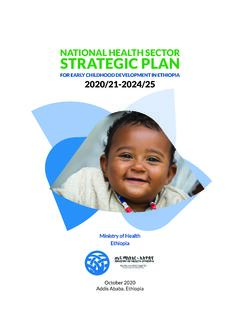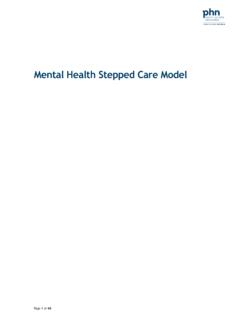Transcription of Local action on health inequalities: Building children and ...
1 Local action on health inequalities: Building children and young people s resilience in schools health Equity Evidence Review 2: September 2014 Building children and young people s resilience in schools2 About Public health EnglandPublic health England s mission is to protect and improve the nation s health and to address inequalities through working with national and Local government, the NHS, industry and the voluntary and community sector. PHE is an operationally autonomous executive agency of the Department of the UCL Institute of health EquityThe Institute is led by Professor Sir Michael Marmot and seeks to increase health equity through action on the social determinants of health , specifically in four areas: influencing global, national and Local policies; advising on and learning from practice; Building the evidence base; and capacity Building .
2 The Institute builds on previous work to tackle inequalities in health led by Professor Sir Michael Marmot and his team, including the Commission on Social Determinants of health , Fair Society Healthy Lives (The Marmot Review) and the Review of Social Determinants of health and the health Divide for the WHO European Region . this evidence reviewThis evidence review was commissioned by PHE and researched, analysed and written by the Institute of health Equity (IHE). There are related evidence reviews available in this series. There is a companion summary briefing note available on this and other related topics from the same series.
3 This review is intended primarily for directors of public health , public health teams and Local authorities. This review and the accompanying briefing are part of a series commissioned by PHE to describe and demonstrate effective, practical Local action on a range of social determinants of health . This evidence review was written for IHE by Matilda Allen. We would like to thank all those on our advisory group who commented on the drafts of this briefing, with particular thanks to Bola Akinwale, Jessica Allen, Mel Bartley, Nicholas Beale, Fiona Brooks, David Buck, Ann Marie Connolly, Eustace DeSousa, Julie Dunning, Alex Godoy, Catherine Gregson, Catherine Johnson, Georgina Kyriacou, Michael Marmot, Claire Robson and Lesley White.
4 Crown copyright 2014. You may re-use this information (excluding logos) free of charge in any format or medium, under the terms of the Open Government Licence To view this licence, visit OGL or email Where we have identified any third party copyright information you will need to obtain permission from the copyright holders concerned. Public health EnglandWellington House133-155 Waterloo RoadLondon SE1 : @PHE_ukPHE publications gateway number: 2014334 September 2014 Building children and young people s resilience in schools3 Introduction 41.
5 What is resilience? 52. Resilience and health inequalities 8 : Resilience and health 8 Risky health behaviours 8 Qualifications and skills 8 Employment 8 mental wellbeing 9 Recovery from illness 9 : Social inequalities and resilience 93. Scale of the problem 124. What works to increase resilience 15 : Who should act to build children s resilience, and why 16 The role of schools in Building resilience 16 The role of Local authorities in supporting and encouraging schools to take action 17 : Focusing on individuals 18 Improving achievements 18 Supporting transitions 21 Healthy behaviours 23 : Addressing interpersonal issues 25 Parents and carers 25 Teachers and other staff 28 Friends 30.
6 School and community level action 31 Whole school approaches 31 The school as a community hub 33 : Principles for implementation: proportionate universalism and prevention 375. Areas for further research 39 Conclusion 40 References 41 ContentsBuilding children and young people s resilience in schools41. Resilience is the capacity to bounce back from adversity.
7 Protective factors increase resilience, whereas risk factors increase vulnerability. Resilient individuals, families and communities are more able to deal with difficulties and adversities than those with less resilience. 2. Those who are resilient do well despite adversity, although it does not imply that those who are resilient are unharmed they often have poorer outcomes than those who have low-risk background but less resilience. This applies to health outcomes and effects success in a range of areas of life across the life course. Evidence shows that resilience could contribute to healthy behaviours, higher qualifications and skills, better employment, better mental wellbeing, and a quicker or more successful recovery from Resilience is not an innate feature of some people s personalities.
8 Resilience and adversity are distributed unequally across the population, and are related to broader socio-economic inequalities which have common causes the inequities in power, money and resources that shape the conditions in which people live and their opportunities, experiences and relationships. 4. Those who face the most adversity are least likely to have the resources necessary to build resilience. This double burden means that inequalities in resilience are likely to contribute to health inequalities. 5. Schools have a key opportunity to build resilience among children and young people, and there is a range of ways in which Local authorities can support and encourage schools to take Actions to inrease resilience can be targeted at different levels they can aim to increase achievements of pupils; to support them through transitions and encourage healthy behaviours; to promote better interpersonal relationships between people particularly parents or carers and children .
9 And to create more supportive, cohesive schools that support both pupils and the wider messagesBuilding children and young people s resilience in schools5 The Marmot Review recognised the important role of schools in Building resilience, and recommended as a policy objective that, schools, families and communities work in partnership to reduce the gradient in health , wellbeing and resilience of children and young people .1 This review builds on that position and provides a summary of evidence about the effect of resilience on health , the unequal distribution of resilience and its contribution to levels of health inequalities.
10 The review outlines the potential actions that can be taken in schools in order to build resilience for all children and young people and reduce inequalities in resilience. Throughout, a social determinants approach to resilience is taken. children and young people s individual characteristics are seen as shaped by, and related to, inequities in power, money and resources, and the conditions in which they are born, grow, live, and in which they will work and Family and community resilience are highly significant and similarly shaped by wider social and economic factors. The focus is on children and young people aged five to 18, in primary and secondary school settings.
















